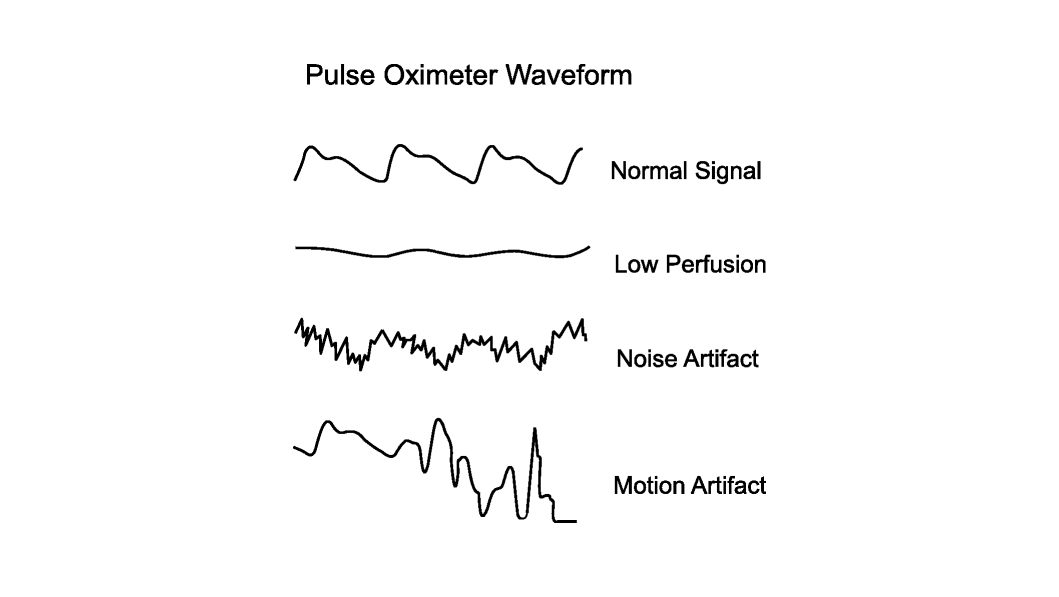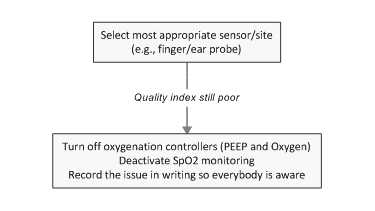
Auteur: Munir Karjaghli, Elmar Paetzold
Date: 02.08.2019
A missing signal or incorrect measurement of the SpO2 values may affect the proper functioning of the PEEP and Oxygen controllers in INTELLiVENT®‑ASV®.

Signal of poor quality or not available
1. Causes of intermittent dropouts or an inability to read SpO2 values:
- Dislocation of the SpO2 probe
- Poor perfusion due to a number of causes, such as hypovolemia, vasoconstriction, etc.
- Excessive patient movement
False values
2. Causes of false normal or elevated SpO2 values:
- Carbon monoxide poisoning
- Sickle cell anemia vaso‑occlusive crises (overestimation of FO2Hb and underestimation of SaO2)
3. Causes of false low SpO2 values:
- Dislocation of the SpO2 probe
- Skin pigmentation
- Venous pulsations
- Poor perfusion due to a number of causes, such as hypovolemia, vasoconstriction, etc.
- Excessive patient movement
- Intravenous pigment dyes
- Inherited forms of abnormal hemoglobin
- Nailpolish
- Severe anemia (with concomitant hypoxemia)
- Interference from a second SpO2 probe in the same vicinity
4. Further possible causes of either false low or high values:
- Methemoglobinemia
- Sulfhemogobinemia
- Poor probe positioning
- Sepsis and septic shock
For more information, see the review about pulse oximetry by Jubran (
Relevant devices: HAMILTON‑G5/S1; HAMILTON‑C6; HAMILTON‑C3; HAMILTON‑C1/T1
Relevant software: HAMILTON-G5/S1 SW v2.81; HAMILTON-C6 SW v1.1.4; HAMILTON-C3 SW v2.0.5; HAMILTON-C1/T1 SW v3.0.x






